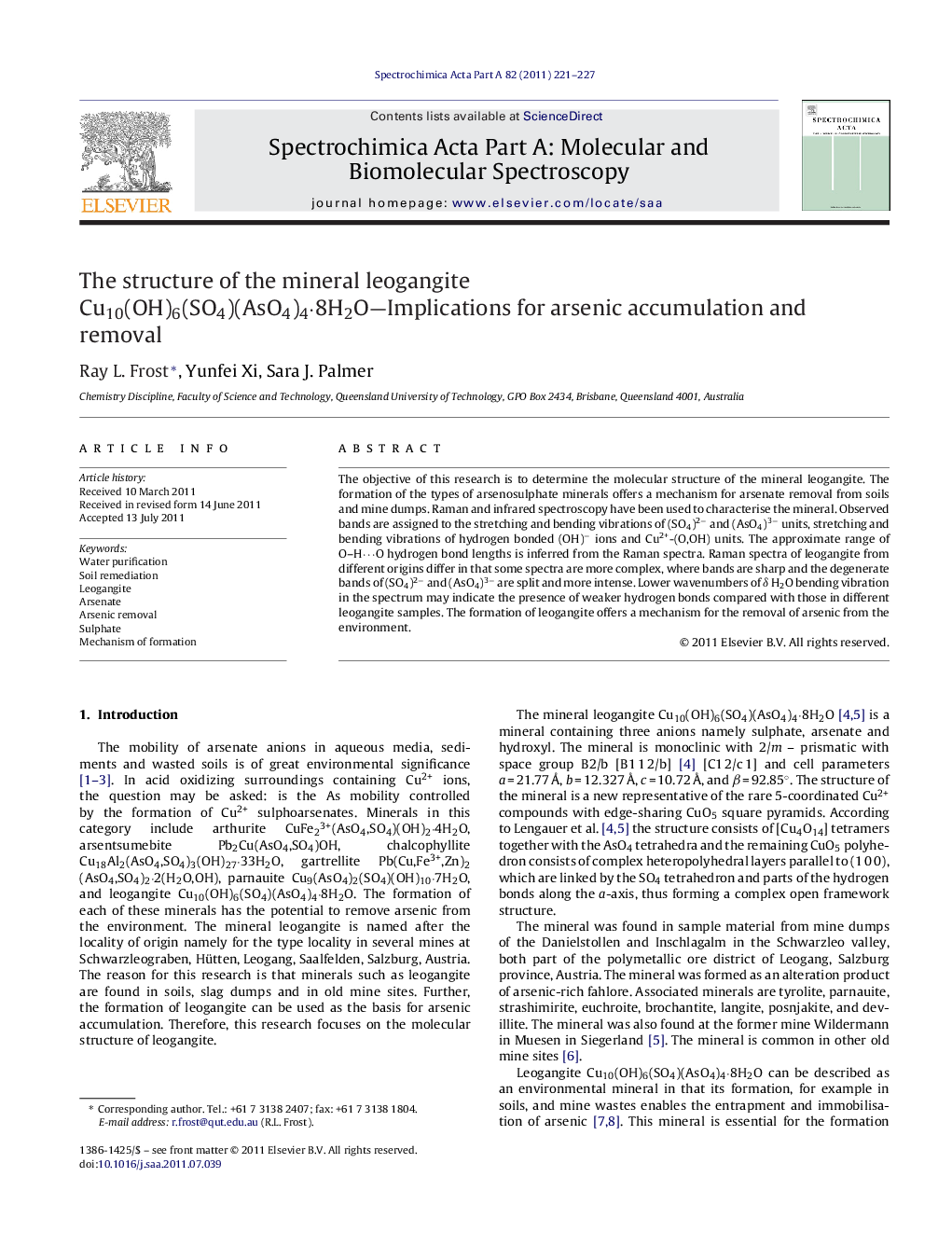| Article ID | Journal | Published Year | Pages | File Type |
|---|---|---|---|---|
| 1233295 | Spectrochimica Acta Part A: Molecular and Biomolecular Spectroscopy | 2011 | 7 Pages |
The objective of this research is to determine the molecular structure of the mineral leogangite. The formation of the types of arsenosulphate minerals offers a mechanism for arsenate removal from soils and mine dumps. Raman and infrared spectroscopy have been used to characterise the mineral. Observed bands are assigned to the stretching and bending vibrations of (SO4)2− and (AsO4)3− units, stretching and bending vibrations of hydrogen bonded (OH)− ions and Cu2+-(O,OH) units. The approximate range of O–H⋯O hydrogen bond lengths is inferred from the Raman spectra. Raman spectra of leogangite from different origins differ in that some spectra are more complex, where bands are sharp and the degenerate bands of (SO4)2− and (AsO4)3− are split and more intense. Lower wavenumbers of δ H2O bending vibration in the spectrum may indicate the presence of weaker hydrogen bonds compared with those in different leogangite samples. The formation of leogangite offers a mechanism for the removal of arsenic from the environment.
Graphical abstractFigure optionsDownload full-size imageDownload as PowerPoint slideHighlights► The formation of these types of arsenosulphate minerals offers a mechanism for arsenate removal from aqueous media, soils and mine dumps. ► Raman and infrared spectroscopy have been used to characterise the mineral leogangite. ► Observed bands are assigned to the stretching and bending vibrations of (SO4)2− and (AsO4)3− units. ► The formation of leogangite offers a mechanism for the removal of arsenic from the environment.
